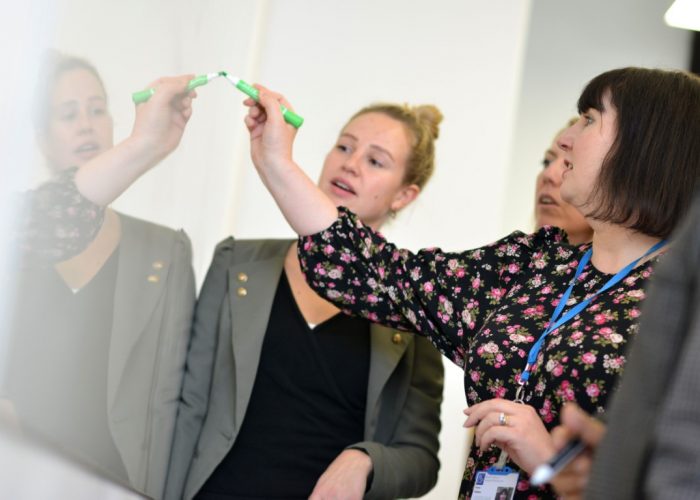 Here we explain how a new feasibility study carried out by ICHP could be a game-changer when it comes to flu prevention.
Here we explain how a new feasibility study carried out by ICHP could be a game-changer when it comes to flu prevention.
Every year the NHS invests millions of pounds in vaccinating the most vulnerable members of our society against flu.
But we know that a large proportion of those who could benefit from the jab do not have it, despite being among the most vulnerable to flu-related complications such as pneumonia or other serious respiratory problems.
A key step to address this low uptake is allowing system leaders a view of the progress on the vaccination programme so they can potentially reallocate resources and work together to address the population’s needs.
Our recent work to address this gap in information and create a system-wide view for flu vaccinations for system leaders has led us to develop this information even further. At ICHP we have access to one of the largest depersonalised linked datasets in Europe through Discover-NOW Health Data Research Hub for Real World Evidence as one of seven Health Data Research UK’s Hubs. In a safe, secure and trusted environment it enables clinicians, researchers scientists, supported by the people of NWL, to accelerate the development of new treatments, devices and apps to more effectively manage, and even prevent health conditions through research.
Using this, we were able to look at data on those eligible for the flu jab and determine how many people had actually been vaccinated and what percentage of those yet to have it. GPs can do this at practice level but at system level additional resources can be brought in or reallocated to best serve the population.
Sometimes we need to flex our approach to vaccinations as our populations differ. Areas with higher deprivation tend to experience worse health and may need additional resources, or certain groups of people may need to be engaged with in a different way. We were able to map our differing populations using data like the Index of Multiple Deprivation and geodemographics, helping to enable bespoke campaigns for each community.
This data was then overlaid on areas where there was a high concentration of eligible people not taking up the vaccinations and highlighted on maps for the decision makers. System leaders could then tailor their approach and focus their efforts on addressing the low uptake in these populations. Taking this one step further, we were then able to track this cohort of patients using Hospital Episode Statistics and see how many of them ended up in hospital with flu-related symptoms.
This led us to think we might find predictors in the data to let hospitals know of potential increases in attendances and admissions.
To do this we added more data to the analysis, we used Google trends to look at what people were searching for around flu and when, along with Met Office data about the weather. We found some very obvious spikes at times when the weather was cold, along with a corresponding increase in hospital admissions. It was also interesting to see that flu searches often peaked on a Tuesday, perhaps indicating people had been suffering in silence over the weekend.
We have the potential to add feeds of data from Twitter and Instagram, where people tweet or post about their flu, that may also be predictors of hospital attendance or admission. We are keen to see if this can help us predict hospital activity and are working out how to use this data over this year’s flu season. We’re excited about the potential such mapping brings for public health and NHS colleagues and we hope that in future we will be able to work with teams across the country to help ensure a targeted approach to vaccination and even help plan and resource for flu outbreaks.
Using our information they will be able to reach out to the geographical areas with the lowest uptake to ensure that far more of the most vulnerable patients are able to receive the jab – saving them from potentially serious illness and unnecessary stays in hospitals, but also saving the NHS thousands of pounds in treatment costs by avoiding these admissions.



